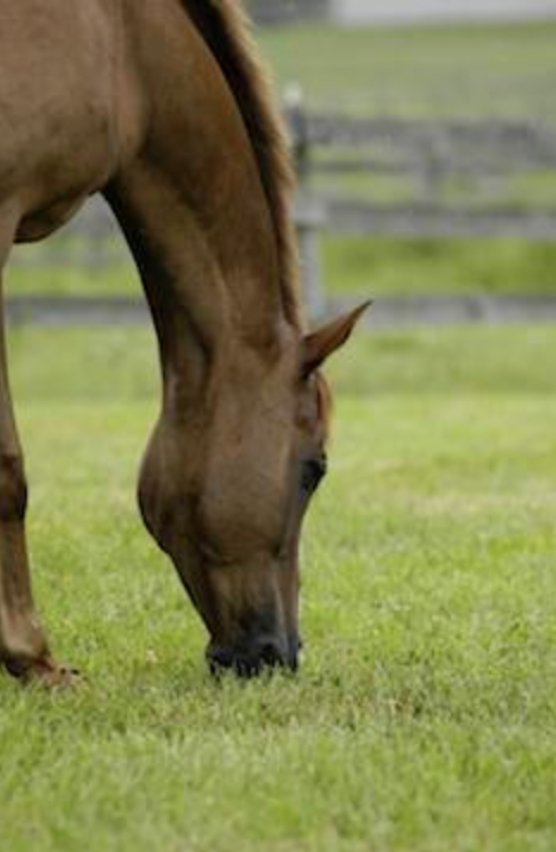Best Pasture Management Practices
A nutrient management plan promotes healthy plant growth and protects the Chesapeake Bay. ©Stacey Nedrow-Wigmore
A nutrient management plan promotes healthy plant growth and protects the Chesapeake Bay.
By Jack Price
Horses are natural grazers, but not every green plant they find in the field provides the nutrition they need. Broadleaf weeds such as dandelion, curly dock, milkweed, dogbane and Canada thistle, for example, tend to crowd out the grasses and legumes that horses need to thrive.
Of course, an optimal mix of nutritious forage rarely grows in horse pastures left on their own. It takes a well-designed program of fertilizers and herbicides to foster desirable plants and discourage those with little value. Applying common fertilizers like nitrogen and phosphorous won’t do any good if the soil pH is too high or too low because the good plants won’t be able utilize the nutrients. When plants don’t take up fertilizers, they run off with storm water and eventually end up in Chesapeake Bay.
Most Marylanders know by now that excess nutrients in the bay feed algae blooms, which block sunlight that underwater bay grasses need to grow. When algae die, the process of decomposition depletes oxygen in the water with harmful effects on sea life.
Fertilizers and Maryland Law
The need to reduce fertilizer runoff into the bay has become so critical that Maryland law requires horse farms to develop written nutrition management plans indicating the amount, placement and timing of fertilizers on their fields. The requirement applies to any operation that grosses more than $2,500 a year from selling, training or boarding horses, or has more than 8,000 pounds of horses on the property.
The law also requires horse owner-operators to fill out an Implementation Report listing the amount and type of fertilizers applied to their pastures during the previous year.
Generally speaking, nutrient management plans must be updated every three years, unless the number of animals or type of nutrients changes significantly during the period. In that case, the NMP must be rewritten for the next year.
Start With a Soil Test
If you have not had a soil test done on your pastures in the last three years, get one done now. Soil test results are generally returned in two weeks. This allows time to apply lime if needed and find out what fertilizers will be needed in the spring. A small investment will pay big dividends.
The soil test indicates the levels of phosphorus, potassium and magnesium. Nitrogen recommendations are based only on the desired plants’ needs. The best practice is to apply custom-blended fertilizers at the rate indicated by the soil test. Custom blending allows you to regulate the amount of nutrients applied to the pastures. The goal is to give the plants only as much of each nutrient as they can use and minimize the risk of loss due to run-off.
Healthy Forage Plants Prevent Soil Erosion
While it’s clear why healthier plants benefit the animals who feed on them, it is important to note that healthy plants are better for the environment, too. Fostering solid plant growth is the most effective way to prevent soil loss through erosion. The grasses on which our animals feed stabilize the soil and prevent it from washing away with rains or blowing away with dry summer winds. When fertilizer-laced soils erode, they carry off nutrients to streams and rivers and, here in Maryland, ultimately to the Chesapeake Bay. Run-off from over-fertilized pastures and fields degrades drinking water quality and starts the cycle that threatens aquatic life in our region.
Learn More
To learn more about Maryland’s Nutrient Management Program:
MDA Nutrient Management website
University of Maryland Extension Nutrient Management Program
Jack Price is a principal in Patriot Land and Wildlife Management Services, Inc. and an MDA-certified Nutrition Management Consultant. He can be reached at (301) 651-5200.

